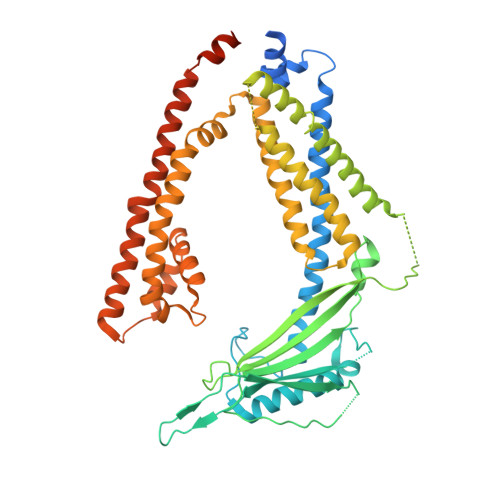Cryo-EM structures of the human endolysosomal TRPML3 channel in three distinct states.
Zhou, X., Li, M., Su, D., Jia, Q., Li, H., Li, X., Yang, J.(2017) Nat Struct Mol Biol 24: 1146-1154
- PubMed: 29106414
- DOI: https://doi.org/10.1038/nsmb.3502
- Primary Citation of Related Structures:
6AYE, 6AYF, 6AYG - PubMed Abstract:
TRPML3 channels are mainly localized to endolysosomes and play a critical role in the endocytic pathway. Their dysfunction causes deafness and pigmentation defects in mice. TRPML3 activity is inhibited by low endolysosomal pH. Here we present cryo-electron microscopy (cryo-EM) structures of human TRPML3 in the closed, agonist-activated, and low-pH-inhibited states, with resolutions of 4.06, 3.62, and 4.65 Å, respectively. The agonist ML-SA1 lodges between S5 and S6 and opens an S6 gate. A polycystin-mucolipin domain (PMD) forms a luminal cap. S1 extends into this cap, forming a 'gating rod' that connects directly to a luminal pore loop, which undergoes dramatic conformational changes in response to low pH. S2 extends intracellularly and interacts with several intracellular regions to form a 'gating knob'. These unique structural features, combined with the results of electrophysiological studies, indicate a new mechanism by which luminal pH and other physiological modulators such as PIP 2 regulate TRPML3 by changing S1 and S2 conformations.
- Beijing Advanced Innovation Center for Structural Biology, Tsinghua-Peking Joint Center for Life Sciences, School of Life Sciences, Tsinghua University, Beijing, China.
Organizational Affiliation:
















